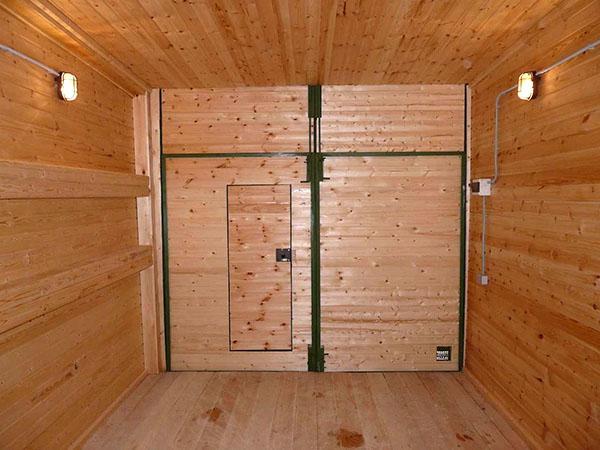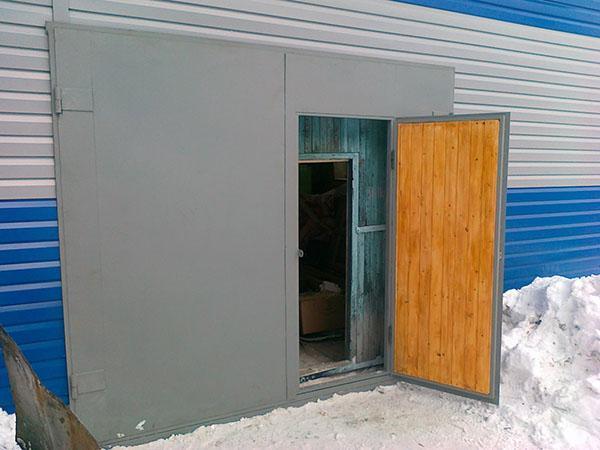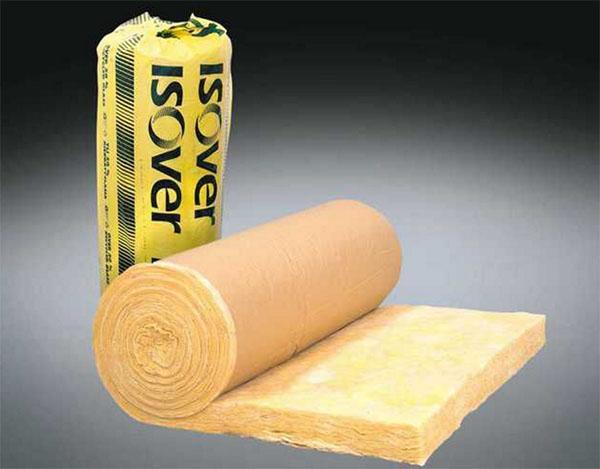How to insulate garage doors with your own hands
 Motorists traditionally spend a lot of time in the garage, caring for their "iron horses". However, in winter, it is extremely uncomfortable to do usual work, and sooner or later the owners face the question of insulation garage doors... This measure allows to solve the problem radically, since heat evaporates very quickly through the door leaf (and usually it is steel sheets). Insulation of the garage not only creates comfortable conditions for its owner, but also allows:
Motorists traditionally spend a lot of time in the garage, caring for their "iron horses". However, in winter, it is extremely uncomfortable to do usual work, and sooner or later the owners face the question of insulation garage doors... This measure allows to solve the problem radically, since heat evaporates very quickly through the door leaf (and usually it is steel sheets). Insulation of the garage not only creates comfortable conditions for its owner, but also allows:
- start the car faster in severe frosts;
- extend the life of rubber parts;
- prevent the appearance of condensation in the internal cavities of the machine;
- create the desired temperature regime in the vegetable store, which are often combined with garages.
The possibility of insulating garage doors depends on their design.
What gates can be insulated

Overhead and sectional garage doors are very popular today. As a rule, they are factory made. The door leaf or individual sections are sandwich panels. From the outside, they are covered with sheet steel, but from the inside they are already insulated with foamed polyurethane and do not need special measures for additional insulation. Hand-made lifting gates are insulated in the same way as swing gates. The thickness of the insulation for them should not exceed the dimensions of the frame. The same rule applies to rollbacks.
Roller shutter gates are not subject to insulation, since their design is designed for a certain thickness.
When choosing a material for insulation, its weight must be taken into account. The weighting of the sashes can lead to the fact that the mechanism by which the gate moves will begin to work worse over time and gradually fail.
The most popular materials for insulation
A good insulation should have low thermal conductivity, then a sufficiently thin layer can significantly reduce heat loss. The following materials are most often used to insulate garage doors:
- Mineral wool and its varieties - glass wool, slag wool, stone wool. All of them are highly hygroscopic, so they need waterproofing. Hand and respiratory protection must be worn when working with them.

- Styrofoam. This word refers to a whole class of polymer gas-filled materials, these include polystyrene, polyvinyl chloride, urea-formaldehyde and polyurethane foam. All varieties differ in greater or lesser elasticity, composition, sound insulation.

All foams have qualities that are indispensable for insulating garage doors - low thermal conductivity and hygroscopicity, fire safety, chemical inertness.
How to insulate a garage door
 Before starting work on insulation, it is necessary to check the performance of ventilation in the garage. In the process, you should not block the ventilation holes with insulation. Normal operation of ventilation helps to reduce humidity and timely remove gasoline vapors and exhaust gases.
Before starting work on insulation, it is necessary to check the performance of ventilation in the garage. In the process, you should not block the ventilation holes with insulation. Normal operation of ventilation helps to reduce humidity and timely remove gasoline vapors and exhaust gases.
Let us analyze in detail how to insulate garage doors on their most common design - swing doors.
Surface preparation
 Examine the inner surface of the door leaf carefully. Large corroded areas are brushed with iron bristles. If rust has covered most of the steel sheet, it is more convenient and faster to work with a drill or grinder with a special round nozzle.
Examine the inner surface of the door leaf carefully. Large corroded areas are brushed with iron bristles. If rust has covered most of the steel sheet, it is more convenient and faster to work with a drill or grinder with a special round nozzle.
After thorough cleaning of rust and degreasing, apply an anti-corrosion primer.
Manufacturing and installation of lathing
 Wooden bars or aluminum profiles are used as lathing. Attach the crate to the gate frame. The material for the lathing is cut to size. Wooden bars are impregnated with a double-action composition - from fire and decay. The lathing elements are attached to the frame of the sash with screws of suitable length. All accessories on the door leaf - locks, ventilation openings, are trimmed with a crate around the perimeter.
Wooden bars or aluminum profiles are used as lathing. Attach the crate to the gate frame. The material for the lathing is cut to size. Wooden bars are impregnated with a double-action composition - from fire and decay. The lathing elements are attached to the frame of the sash with screws of suitable length. All accessories on the door leaf - locks, ventilation openings, are trimmed with a crate around the perimeter.
Waterproofing and laying insulation
 Before insulating the garage door mineral wool, you need to observe some subtleties of handling this material. Of all its varieties, it is better to stop at basalt wool from a well-known manufacturer. Before installing cotton wool, you should take care of waterproofing so that the material does not absorb moisture. Good results are obtained by coating the inner side of the gate with bitumen-polymer mastic or finishing with a self-adhesive material such as Izolon.
Before insulating the garage door mineral wool, you need to observe some subtleties of handling this material. Of all its varieties, it is better to stop at basalt wool from a well-known manufacturer. Before installing cotton wool, you should take care of waterproofing so that the material does not absorb moisture. Good results are obtained by coating the inner side of the gate with bitumen-polymer mastic or finishing with a self-adhesive material such as Izolon.
After all the metal parts of the gate are covered with waterproofing, the insulation is cut into pieces of such a size so that it exceeds the distance between the sheathing bars by several centimeters. This is done so that gaps do not appear, since mineral wool cakes over time.
It is most convenient to cut the insulation as follows: spread a sheet of fiberboard on the floor, roll mineral wool over it, measure it and forcefully hold it with a sharp clerical knife.
 A vapor barrier film is stretched over the mineral wool and attached to the bars with a construction stapler. After vapor barrier, the already insulated swing gates are ready for final finishing. Facing is made with plastic or wooden clapboard, corrugated board, OSB sheets. The cladding material is attached to the bars with screws with a press washer.
A vapor barrier film is stretched over the mineral wool and attached to the bars with a construction stapler. After vapor barrier, the already insulated swing gates are ready for final finishing. Facing is made with plastic or wooden clapboard, corrugated board, OSB sheets. The cladding material is attached to the bars with screws with a press washer.
Insulation laying around the perimeter of the gate
 Gate leaves are very rarely adjacent to each other. Usually a gap is formed between them, allowing the gate to be closed freely. Various seals are used to prevent heat from escaping through these slots. As a rule, they are a self-adhesive strip with a rubber or foam seal. This seal is not suitable for insulating the lower part of the door. For these purposes, there are special brush strips. They are attached to the bottom of the gate with self-tapping screws.
Gate leaves are very rarely adjacent to each other. Usually a gap is formed between them, allowing the gate to be closed freely. Various seals are used to prevent heat from escaping through these slots. As a rule, they are a self-adhesive strip with a rubber or foam seal. This seal is not suitable for insulating the lower part of the door. For these purposes, there are special brush strips. They are attached to the bottom of the gate with self-tapping screws.
After all the cracks are closed, the insulation of the garage door can be considered complete.